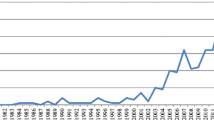
Overview
- Evaluates the impact of various aspects of firms’ operations on product, process, and organizational innovations
- Examines what determines innovation and its effects on firm performance of manufacturing SMEs in Vietnam and Laos
- Summarizes innovation theories succinctly and precisely for understanding innovation in developing countries
Part of the book series: Kobe University Monograph Series in Social Science Research (KUMSSSR)
Access this book
Tax calculation will be finalised at checkout
Other ways to access
About this book
The main focus of this book is innovation for developing countries: what is the innovation for, what are the current conditions of the innovation, and how to effectively innovate in developing economies. It contains the latest insights and analyses of innovation based on intensive interviews as well as primary and secondary data of manufacturing firms in developing countries, Vietnam and Laos in particular. Innovation requires something new. Integration of deep understanding of innovation and econometric analyses are a “new combination” in this book, which contrasts with other, similar books in the field. This new approach may benefit policy makers as well as scholars and firms in poor countries.
The main points of the book are summarized as follows: First, for most poor countries “learning innovation” is considered the key to economic growth rather than “leading-edge innovation”, which is a more popular theme in similar books on innovation. Second, an overwhelming majority ofinnovations currently used in poor countries are developed in advanced countries, so technology transfer and learning from the latter are a fundamental source of innovation in the former. Third, a surprisingly high rate of firms (around 50%) reported that they introduced new or significantly improved products or processes in poor countries, and this high innovation rate is a great benefit to be enhanced by government policies. Fourth, the common factors driving innovation of manufacturing firms in Vietnam and Laos are (1) human capital, (2) social capital, and (3) innovation in the past. Fifth, the impact of innovation on firm performance is found to be mixed in these countries. Sixth, so far almost all studies on innovation have focused on product or process innovation, but additional light is shed here on organizational innovation.Similar content being viewed by others
Keywords
Table of contents (6 chapters)
-
Front Matter
-
Back Matter
Editors and Affiliations
Bibliographic Information
Book Title: Innovation in Developing Countries
Book Subtitle: Lessons from Vietnam and Laos
Editors: Nobuaki Matsunaga
Series Title: Kobe University Monograph Series in Social Science Research
DOI: https://doi.org/10.1007/978-981-13-3525-9
Publisher: Springer Singapore
eBook Packages: Economics and Finance, Economics and Finance (R0)
Copyright Information: The Editor(s) (if applicable) and The Author(s), under exclusive license to Springer Nature Singapore Pte Ltd., part of Springer Nature 2019
Hardcover ISBN: 978-981-13-3524-2Published: 22 February 2019
eBook ISBN: 978-981-13-3525-9Published: 06 February 2019
Series ISSN: 2524-504X
Series E-ISSN: 2524-5058
Edition Number: 1
Number of Pages: XVIII, 129
Number of Illustrations: 3 b/w illustrations, 3 illustrations in colour
Topics: Development Economics, R & D/Technology Policy, Economic Growth, Economic Policy, Asian Economics



